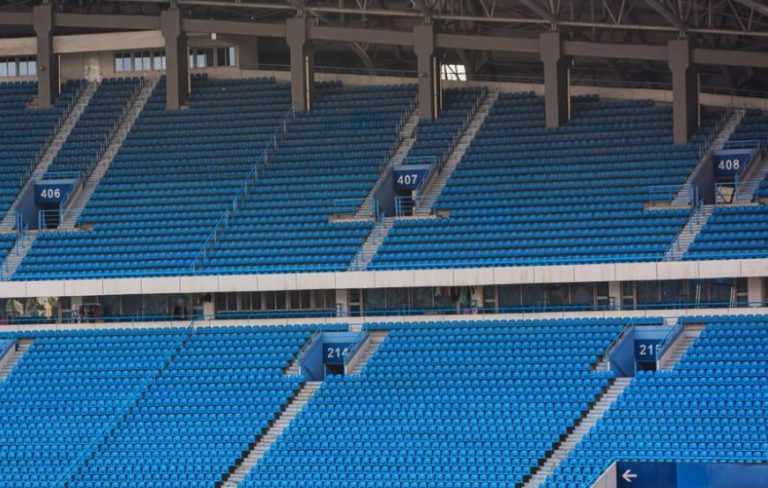Beaver Stadium has been a collegiate football stronghold for many years, hosting some of the most thrilling events in Penn State’s history. But the university is taking a risk after going almost 20 years without significant renovations.
In order to update one of the nation’s most famous stadiums, improve spectator comfort, and reinvent game-day experiences, Penn State has started a $700 million stadium redevelopment project. With the addition of upscale suites, first-rate seats, enlarged concourses, and new hospitality areas, Beaver Stadium will continue to be a top college football destination.
Penn State Stadium Renovation: Key Project Details
| Feature | Details |
|---|---|
| Total Investment | $700 million |
| Project Timeline | 2024-2027 |
| Key Enhancements | Premium seating, expanded concourses, modern amenities |
| Funding Sources | Donations, bond issues, new revenue models |
| Temporary Seating | Some fans will be relocated during construction |
| Completion Goal | Fully operational by the 2027 season |
| Economic Impact | Increased revenue and local economic boost |
Source: Penn State Athletics , Wiki
Starting Off: The Initial Phases of Change
Following Penn State’s victory against SMU in the College Football Playoffs, construction crews got to work on the renovations. The first significant turning point? In an effort to reimagine Beaver Stadium, the press box and upper deck on the west side were demolished.
With club seating, VIP suites, and a cutting-edge media center, the West side will undergo a thorough makeover. In order to provide a top-notch game-day experience, university authorities want to make this area the focal point of the remodeling.
The stadium’s lower bowl will be completely rebuilt in Phase 2, offering greater sightlines, more comfortable seats, and easier access for fans.
The rationale behind Penn State’s Beaver Stadium investment
Penn State has lagged behind its Big Ten opponents in stadium upgrading, despite Beaver Stadium continuing to be one of college football’s most famous locations. Penn State’s infrastructure is outdated as a result of significant investments made by universities like Michigan, Ohio State, and Wisconsin.
Patrick Kraft, athletic director, stated unequivocally: It’s time to catch up.
“We are lagging behind in providing for our fans as well as addressing the stadium’s structural requirements. Penn State needs to catch up with its counterparts.
The goal of this remodeling is to establish a new benchmark rather than merely stay current.
A Multifaceted Vision: Beyond Football
Beaver Stadium will be upgraded for more than just Penn State’s seven annual home games. According to the university, it will serve as a year-round entertainment center that can accommodate:
🎤 Festivals & Concerts: Huge entertainment and music events
🏆 Potential neutral-site games and special matchups at major sporting events
🏢 Premium event venues for corporate meetings: Corporate Conferences
🎓 Academic conferences, commencements, and alumni reunions are examples of university events.
It is anticipated that this diversification into non-football events will boost the local economy and create new cash streams.
What the Renovation Will Bring to Fans
Improved Comfort & Seating
More comfy, broader seats
Every portion has better sightlines.
Temporary seating arrangements while work is underway
High-Level Hospitality Spaces
Club seating, opulent suites, and first-rate hospitality areas
Increased selection of food and drinks
Contemporary concourses that facilitate easier mobility
Better Convenience & Accessibility 🚪
Expanded concourses and additional ADA-accessible seats
New, more effective entrances and exits
Better design for the concessions and restrooms
These upgrades will make Beaver Stadium a more entertaining, effective, and welcoming place for fans.
How the $700M is Being Raised to Fund the Future
Although such a large-scale refurbishment is not inexpensive, Penn State has created a strategic finance plan:
✔️ Contributions: A total of $66 million was raised, out of a target of $134 million.
✔️ Bond Issues: A $70 million bond for early construction was issued.
Improved ticketing, sponsorships, and venue rentals are examples of new revenue streams.
Penn State is dedicated to implementing these improvements without imposing unwarranted expenses on taxpayers or students.
Project Schedule: When Is It Going to Be Done?
2024-2025 (First Phase)
Demolition of the press box and top deck
Building of club seating and opulent suites
2026 (Phase 2)
Destroying and rebuilding the lower bowl
Increasing accessibility and enhancing seating
📅 Final Phase, 2027
✔️ The grand reopening for 2027
In order to minimize disturbance and keep Beaver Stadium operational during the refurbishment, Penn State is spreading out the work.
The Significance of This Renovation
The future is at stake for Penn State’s investment in Beaver Stadium, not simply football.
For the Fans: A cozier, more interesting experience.
💪 A stadium that embodies Penn State’s spirit of competition is what the players want.
📈 For the University: An economic engine and long-term source of income.
Beaver Stadium will continue to be one of the most prestigious sports venues thanks to the renovations, which solidify Penn State’s standing as one of the country’s best athletic programs.


